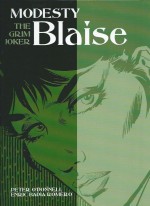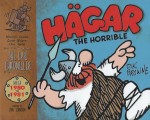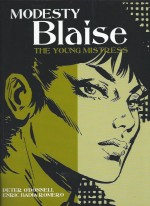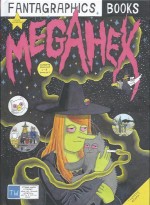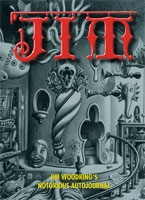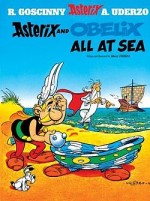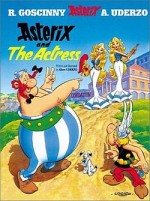
By Uderzo, translated by Anthea Bell & Derek Hockridge (Orion Books)
ISBN: 978-0-75284-658-8
A son of Italian immigrants, Alberto Aleandro Uderzo was born on April 25th 1927 in Fismes on the Marne. He dreamed of becoming an aircraft mechanic but even as a young child reading Mickey Mouse in Le Pétit Parisien he showed artistic flair. Albert became a French citizen when he was seven and found employment at thirteen, apprenticed to the Paris Publishing Society, where he learned design, typography, calligraphy and photo retouching.
When World War II came he spent time with farming relatives in Brittany and joined his father’s furniture-making business. Brittany beguiled and fascinated Uderzo and when a location for Asterix‘s idyllic village was being mooted, that beautiful countryside was the only choice…
In the post-war rebuilding of France, Uderzo returned to Paris and became a successful artist in the recovering nation’s burgeoning comics industry. His first published work, a pastiche of Aesop’s Fables, appeared in Junior and in 1945 he was introduced to industry giant Edmond-François Calvo (whose own comic masterpiece The Beast is Dead is far too long overdue for a commemorative reissue…).
Tireless Uderzo’s subsequent creations included the indomitable eccentric Clopinard, Belloy, l’Invulnérable, Prince Rollin and Arys Buck. He illustrated Em-Ré-Vil’s novel Flamberge, dabbled in animation, worked as a journalist and illustrator for France Dimanche and created the vertical comicstrip ‘Le Crime ne Paie pas’ for France-Soir.
In 1950 he illustrated a few episodes of the franchised European version of Fawcett’s Captain Marvel Jr. for Bravo!
An inveterate traveller, the artistic prodigy met Rene Goscinny in 1951. Soon bosom buddies, they resolved to work together at the new Paris office of Belgian Publishing giant World Press. Their first published collaboration was in November of that year; a feature piece on savoir vivre (gracious living) for women’s weekly Bonnes Soirée, following which an avalanche of splendid strips and serials poured forth.
Jehan Pistolet and Luc Junior were created for La Libre Junior and they resulted in a western starring a “Red Indian†who eventually evolved into the delightfully infamous Oumpah-Pah. In 1955, with the formation of Édifrance/Édipresse, Uderzo drew Bill Blanchart for La Libre Junior, replaced Christian Godard on Benjamin et Benjamine and in 1957 added Charlier’s Clairette to his portfolio.
The following year, he made his debut in Tintin, as Oumpah-Pah finally found a home and a rapturous audience. Uderzo also drew Poussin et Poussif, La Famille Moutonet and La Famille Cokalane.
When Pilote launched in 1959 Uderzo was a major creative force for the new enterprise, collaborating with Charlier on Tanguy et Laverdure and devising – with Goscinny – a little something called Asterix…
Although the gallant Gaul was a massive hit from the start, Uderzo continued illustrating Les Aventures de Tanguy et Laverdure, but once the first hilarious historical romp was collected in an album as Ast̩rix le gaulois in 1961 it became clear that the hit series would demand most of his time Рespecially since the incredible Goscinny never seemed to require rest or run out of ideas.
By 1967 Asterix occupied all Uderzo’s time and attention, and in 1974 the partners formed Idéfix Studios to fully exploit their inimitable creation. When Goscinny passed away three years later, Uderzo had to be convinced to continue the adventures as writer and artist, producing a further ten volumes until 2010 when he retired.
After nearly 15 years as a weekly comic serial subsequently collected into book-length compilations, in 1974 the 21st (Asterix and Caesar’s Gift) was the first published as a complete original album before serialisation. Thereafter each new release was an eagerly anticipated, impatiently awaited treat for the strip’s millions of fans…
More than 325 million copies of 35 Asterix books have sold worldwide, making his joint creators France’s best-selling international authors, and now that torch has been passed and new sagas of the incomparable icon and his bellicose brethren are being created by Jean-Yves Ferri and Didier Conrad…
One of the most popular comics on Earth, the collected chronicles of Asterix the Gaul have been translated into more than 100 languages since his debut, with twelve animated and live-action movies, TV series, assorted games, toys, merchandise and even a theme park outside Paris (Parc Astérix, naturellement)…
Like all the best stories the narrative premise works on more than one level: read it as an action-packed comedic romp of sneaky and bullying baddies coming a-cropper if you want, or as a punfully sly and witty satire for older, wiser heads. English-speakers are further blessed by the brilliantly light touch of master translators Anthea Bell & Derek Hockridge who played no small part in making the indomitable little Gaul so very palatable to English tongues.
Many of the intoxicating epics are set in various exotic locales throughout the Ancient World, with the Garrulous Gallic Gentlemen reduced to quizzical tourists and bemused commentators in every fantastic land and corner of the civilisations that proliferated in that fabled era. The rest – more than half of the canon – take place in and around Uderzo’s adored Brittany, where, circa 50 B.C., a little hamlet of cantankerous, proudly defiant warriors and their families resisted every effort of the mighty Roman Empire to complete the conquest of Gaul.
The land is divided by the notional conquerors into provinces of Celtica, Aquitania and Amorica, but the very tip of the last named just refuses to be pacified…
Whenever the heroes were playing at home, the Romans, unable to defeat the last bastion of Gallic insouciance, futilely resorted to a policy of absolute containment. Thus the little seaside hamlet was permanently hemmed in by the heavily fortified garrisons of Totorum, Aquarium, Laudanum and Compendium.
The Gauls couldn’t care less, daily defying and frustrating the world’s greatest military machine simply by going about their everyday affairs, protected by the miraculous magic potion of resident druid Getafix and the shrewd wits of the diminutive dynamo and his simplistic, supercharged best friend Obelix…
Firmly established as a global brand and premium French export from the mid-1960s onwards, Asterix the Gaul continues to grow in quality as new creators toil ever onward, crafting further fabulous sagas and building a stunning legacy of graphic excellence and storytelling gold…
Uderzo’s seventh session as sole auteur was Astèrix et Latraviata released in 2001 as the 30th volume of the ever-unfolding saga. The English language version was released that same year as Asterix and the Actress.
The revelatory epic opens with romance in the air as Obelix and his lifelong pal return to the village laden down with boars and more battered keepsakes of the ongoing battle with the woefully outmatched Romans.
They amiably amble into a huge surprise party. The heroes share the same birthday and their friends have arranged the event to commemorate the occasion. Even their mothers have come down for a visit from fashionable regional capital Condatum…
Soon a feast is in full swing but after handing over their spectacular gifts – a fabulous jewelled sword for Asterix and an equally splendid Roman helmet for Obelix to add to his huge collection – culled from the parents’ fashionable souvenir shop, the mothers begin a battle of their own with their sons.
Fed up with waiting for their hardworking husbands to arrive from the Big City, the impatient matrons start in on the birthday boys with lectures about settling down and providing some grandchildren…
Overruling Asterix and Obelix’s complaints, the insistent Sarsaparilla and Vanilla conduct acutely embarrassing interviews with the village’s contingent of eligible females – and their potential mothers-in-law – and even organise a formal dance to show off their sons’ matrimonial potential, but the matchmaking is a succession of fiascos since the oafish louts just don’t want to play ball…
Fathers Astronomix and Obeliscoidix are now long overdue. Unknown to all they have been arrested by Prefect Bogus Genius. The wily official has a problem which needs some clever and extremely delicate handling…
Already in custody is dipsomaniac former legionary Tremensdelirious (see Asterix and Caesar’s Gift), who sold the aforementioned sword and helmet to the Gaulish souvenir traders. Sadly the items’ true owner is Caesar’s greatest enemy Pompey and thus proof positive that the usurping former tribune is back in Europe. The items must be quietly recovered before Rome realises…
Well aware of the ferocious reputation of the sons of his Gaulish captives, the Prefect enacts a devious scheme suggested by his spies. Mighty Obelix turns to jelly whenever he sees the beautiful Panacea (another village émigré now living in Condatum with her husband Tragicomix – as first seen in Asterix the Legionary) so the devilish conspirator has hired the Empire’s greatest actress Latraviata to impersonate her and steal back the incriminating evidence…
As the despondent dads tire of waiting for rescue by their doughty boys and strike a deal with their cellmate Tremensdelirious, Decurion Fastandfurius is pretending to be a merchant escorting “Panacea†back to her home village. The poor thing has a very selective case of amnesia…
In that certain Gaulish village on the coast of Armorica the actress is readily accepted with only Druid Getafix in the least suspicious. Soon her fawning attention to besotted Obelix wins her the helmet but Asterix is not so easily wooed. That changes when a spat with his now-jealous bosom buddy results in a mighty blow to the head which deprives him of his usually superior wits…
If not for overprotective mother Vanilla the plot would have succeeded then and there, but she stops the ingénue making off with the sword and calls in Getafix to cure her addled son. Unfortunately the magic potion has a bizarre effect on the little zombie and Asterix goes wild, acting like an animal and scrapping with Obelix before hurtling out to sea like a torpedo…
He regains his senses on a rock in the middle of nowhere just as a massive storm erupts about him and only survives due to the intervention of old frenemies The Pirates and a particularly accommodating dolphin…
In the meantime Latraviata and Fastandfurius have secretly secured the sword and started back for Condatum. Still unaware of their true nature, the freshly reconciled Asterix and Obelix – who are heading in the same direction to find out what has delayed their dads – cadge a lift on the infiltrators’ cart.
Elsewhere, other agents are coming into play. A certain spy has already informed Caesar of trouble brewing and the real Panacea, having seen Astronomix and Obeliscoidix’s wrecked shop, has rushed off with Tragicomix to warn the village…
As the heroes head for the city, they are baffled to see Romans so busy fighting each other that they don’t even notice their Gaulish nemeses, and everything comes to a startling head when Panacea apparently meets herself on the road…
After explanations, apologies and a surprising change of heart on behalf of one of the conspirators, Asterix and Obelix dash on to Condatum to rescue their fathers, only to stride straight into a major melee as Caesar and Pompey’s forces furiously clash…
Of course it all works out in the end and cartoon dog-lovers everywhere will rejoice in the last moment arrival of the missing wonder mutt Dogmatix…and the introduction of his new “wife†and family. Apparently some heroes can successfully combine romance and duty…
Packed with outrageous action, good-natured joshing, clever targeted raucous family humour, bombastic spectacle and a torrent of punishing puns to astound and bemuse youngsters of all ages, this rollicking affirmation of life’s eternal verities further confirmed Uderzo’s reputation as a storyteller whilst his stunning illustrative ability affords glimpses of sheer magic to lovers of cartoon art. Asterix and the Actress proves that the potion-powered paragons of Gallic Pride will never lose their potent punch.
© 2001 Les Éditions Albert René, Goscinny-Uderzo. English translation: © 2001 Les Éditions Albert René, Goscinny/Uderzo. All rights reserved.



